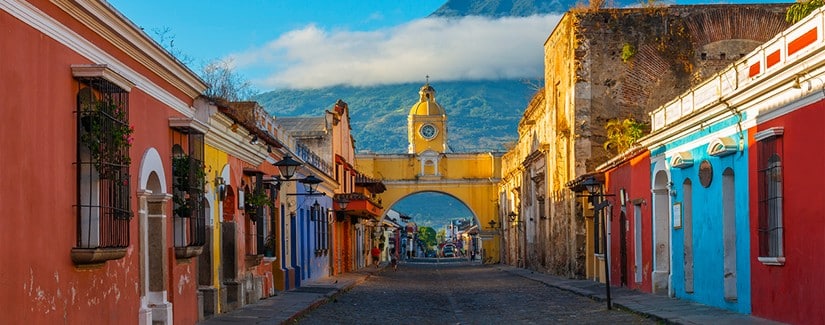Following the elections held in 2023, Bernardo Arévalo was sworn in as president of Guatemala on January 15, 2024, in a country that faces the challenge of mitigating the economic inequality gap with a positive outlook in growth and development.
Known as the country of eternal spring for its warm and evergreen climate, Guatemala enjoys an exceptional geographic location, with considerable natural resources that are yet to be exploited. It has an estimated population of 17,357,886 people (2022) according to the National Institute of Statistics (INE) of the region. The illiteracy rate, despite decreasing considerably in recent decades, stands at 18.5%. Reducing this percentage is a priority objective for UNESCO in collaboration with the National Literacy Committee (CONALFA), which seeks to continue learning activities in the country.
According to the latest data released by the World Bank, economic indicators for the region in 2022 reflected:
- GDP (at current prices): $95 billion;
- GDP increase (annual %): 4.1; and
- inflation (annual %): 6.9.
A balance sheet published by the International Monetary Fund in March 2023 indicated that, although economic stability in the region was maintained despite an unfavorable global context, the main triggers of the rise in inflation in 2022 were external factors, with a trend that is not yet downward—although the institution is confident that it will begin reversing soon.
The potential GDP (which refers to the estimation of the maximum amount of final goods and services that an economy can produce operating at its maximum capacity) in Guatemala is 3.5%, resulting in the latest IMF projections:

The Largest Economy in Central America
In terms of economic activity, Guatemala is the largest economy in Central America, according to the latest report published by ICEX, representing close to 39% of regional GDP. The long-term outlook is generally viewed as positive, although its economy depends significantly on the U.S., the destination of one-third of its exports and the main source of Foreign Direct Investment (FDI), which in 2022 accounted for 1.4% of GDP.
According to the Monetary Policy report published by the Bank of Guatemala in October 2023, positive growth rates are expected in all economic activities, notably, among others:
- vehicle repair and trade (linked to the expected increase in production of agricultural and industrial activities, as well as the estimated increase in the import of goods);
- manufacturing industries (driven primarily in the manufacture of cement, plastic goods, furniture, and paper);
- real estate activities (associated with favorable prospects in housing construction); and
- financial and insurance activities (influenced by the expected increase in credit to the private sector, which would positively influence the activity of banks and financial institutions).
Stable Trade Balance
The latest figures published by the Bank of Guatemala, in November 2023, reveal that total General Trade exports were above $13 billion, 9.3% less than the previous year. The most important goods based on their share of total value were:
- apparel (10.6%);
- edible fats and oils (7.4%);
- coffee (7.1%); and
- banana (7.1%).
The main destinations of exports, according to their share, were:
- Central America (36%);
- United States (30.9%);
- Eurozone (9.7%); and
- Mexico (4.7%).
With respect to imports made in the same period of time, Guatemala registered a total of $27.899 billion, 6.1% less than the previous year. The decline was marked by the negative variation observed in raw materials and intermediate goods for industry, with a decrease of –17.7%.
The main business partners were:
- United States (33.7%);
- China (13.6%);
- Central America (11.4%); and
- Mexico (11.1%).
Driving Foreign Business
As disclosed by ICEX, Guatemala seeks to facilitate the business environment to attract greater investment. In this regard, in addition to having the Agile Imports Window (a system that allows import requirements to be obtained electronically), in 2022, the Single Window for Foreign Trade was implemented in order to expedite export procedures.
Business opportunities in Guatemala focus on their industrialization process, which favors the arrival of high-value-added goods, such as:
- machinery and equipment (construction, public works, and transportation);
- engineering and consulting (state modernization, education, and training);
- building materials and equipment;
- consumer goods (especially clothing and footwear) and food products; and
- equipment for environmental projects and renewable energy generation.




